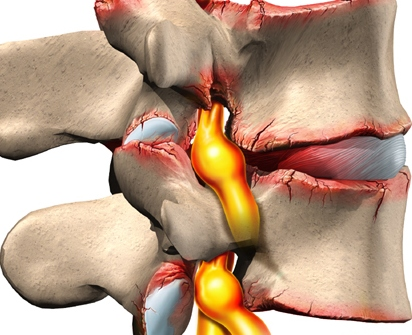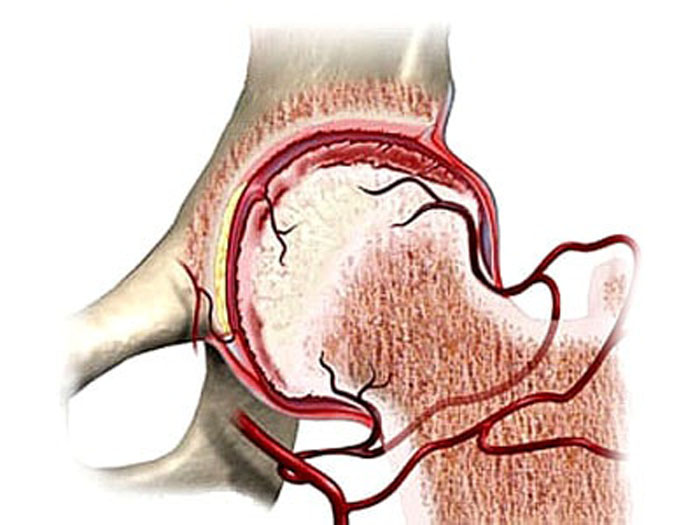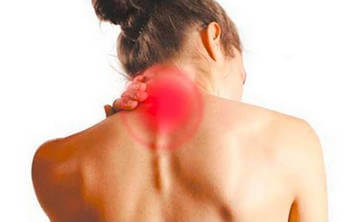Physiotherapy for intervertebral hernia
Physiotherapy is recommended by doctors for hernia of the lumbar spine as the main, auxiliary and preventive method of treatment. Procedures stop negative symptoms and restore mobility. However, it is necessary to undergo treatment under the supervision of a doctor in a medical institution in order to avoid complications. If the procedures are carried out correctly, patients notice a positive trend as early as 3-4 days.
Spinal hernia: recovery with physiotherapy
The effectiveness of physiotherapy
Self-administration of physiotherapy is prohibited. The treatment complex is selected by the doctor after undergoing a comprehensive examination based on the individual characteristics of the organism.
Properly selected physiotherapy stops the process of weakening the muscular frame, which can lead to atrophy, lameness and the development of body asymmetry. The duration of the course and the types of treatment procedures vary depending on the symptoms and stage of the disease. However, after the first sessions, the patient may experience the following positive effects:
- relief of pain syndrome;
- restoration of motor functions;
- strengthening the muscular frame;
- acceleration of the regeneration process;
- relaxation of the body (physical and emotional).
Advantages and disadvantages
 Physiotherapy procedures accelerate metabolic processes.
Physiotherapy procedures accelerate metabolic processes. Physiotherapy for a hernia of the lumbar spine is an effective method of treatment that affects the spinal column, improving the patient's overall well-being. There is a strengthening of the immune and nervous systems, as well as an improvement in the psycho-emotional state. Thanks to physiotherapy, the dosages of medications are reduced, because the therapeutic effect of physical factors enhances the effectiveness of drugs. Also, physiotherapy in diagnosing an intervertebral hernia helps to avoid the following complications:
- atrophy of muscle tissue;
- deterioration in sensitivity;
- failure of thermoregulation processes;
- muscle weakening.
The disadvantages include the need to undergo a full treatment course in order to achieve a long-term result. Also, the patient should carefully approach the choice of a specialist. An incorrectly performed procedure can cause complications, increased pain and a general deterioration in well-being.
What physiotherapy is indicated for intervertebral hernia?
Electrical stimulation for hernia
 Low-frequency current pulses successfully relieve pain.
Low-frequency current pulses successfully relieve pain. Exposure to a low frequency pulsed current through a special needle eliminates the root cause of the disease, and not only treats the symptoms. The advantages are the absence of adverse reactions and a long-term effect. The procedure can be done by everyone, regardless of age, physical parameters and the stage of development of the disease. Doctors note the following positive effects:
- restoration of blood microcirculation in the intervertebral discs and vertebrae;
- stopping degenerative processes in cartilage and bone tissue;
- splitting of salts in the spinal column;
- restoration of nerve endings;
- complete relief of pain.
Electrophoresis: injection of drugs through the skin
Two electrodes with a drug applied are applied to the back of the patient, through which a current passes. Under the influence of the resulting electric field, the drugs come directly to the damaged disc. A slight tingling sensation indicates the correctness of the procedure. The optimal duration is 15 minutes. Physiotherapy for a hernia of the cervical spine takes 5-10 days. The impact of current should be carried out only during the period of remission, when acute pain is not observed.
 Under the influence of heat, drugs penetrate the body faster.
Under the influence of heat, drugs penetrate the body faster. Paraffin, melted to 50-60 °, is applied to the damaged area with a layer of 2-3 cm, and then covered with a special film. To achieve maximum effect, the back is additionally insulated. The optimal session duration is 30-50 minutes. Patients note the disappearance of pain, as well as the weakening of the inflammatory process. It is not recommended to conduct a session at home.
Ultrasound Therapy
Mechanical vibrations of high frequency, penetrating through the skin by 5-6 cm, exert pressure on the damaged area. Patients experience the following improvements after ultrasound:
- harmonization of metabolic processes;
- regeneration of the spinal disc;
- saturation of tissues with nutrients;
- stop degenerative processes;
- start of redox processes in the bones.
EHF-therapy
 The procedure speeds up blood flow.
The procedure speeds up blood flow. Exposure to high-frequency waves causes a resonance in the body, which leads to the stimulation of regenerative processes. During the treatment session, the patient does not feel discomfort, and the skin remains intact. Doctors note such improvements after 5-10 procedures:
- restoration of blood microcirculation;
- decrease in edema;
- healing of bone and cartilage tissue;
- restoration of thermoregulation of the body;
- strengthening the nervous and immune systems.
Bernard currents
The introduction of a needle under the skin, acting as an electrode, should be carried out by a specialist in order to prevent complications and infection.
 The therapy promotes the destruction of salt deposits.
The therapy promotes the destruction of salt deposits. Painless therapy gives results after the first session. Also, the procedure does not require additional medication. In patients who have undergone a treatment course, the risk of relapse is reduced by 3 times. Bernard's currents for spinal hernia are an effective treatment method that causes the following improvements:
- nutrition of bone and cartilage tissue is normalized;
- stops the process of degeneration;
- salts are split in the spine;
- the pain disappears.
Healing acupuncture
It is based on the introduction of special needles of various lengths and diameters into biologically active points under the skin. Due to the irritating effect, patients experience increased blood flow, normalization of metabolic processes, saturation of damaged tissues with nutrients. During the procedure, discomfort and mild pain are possible.
